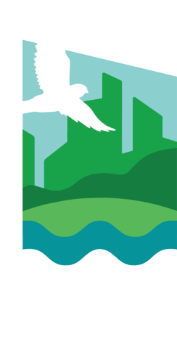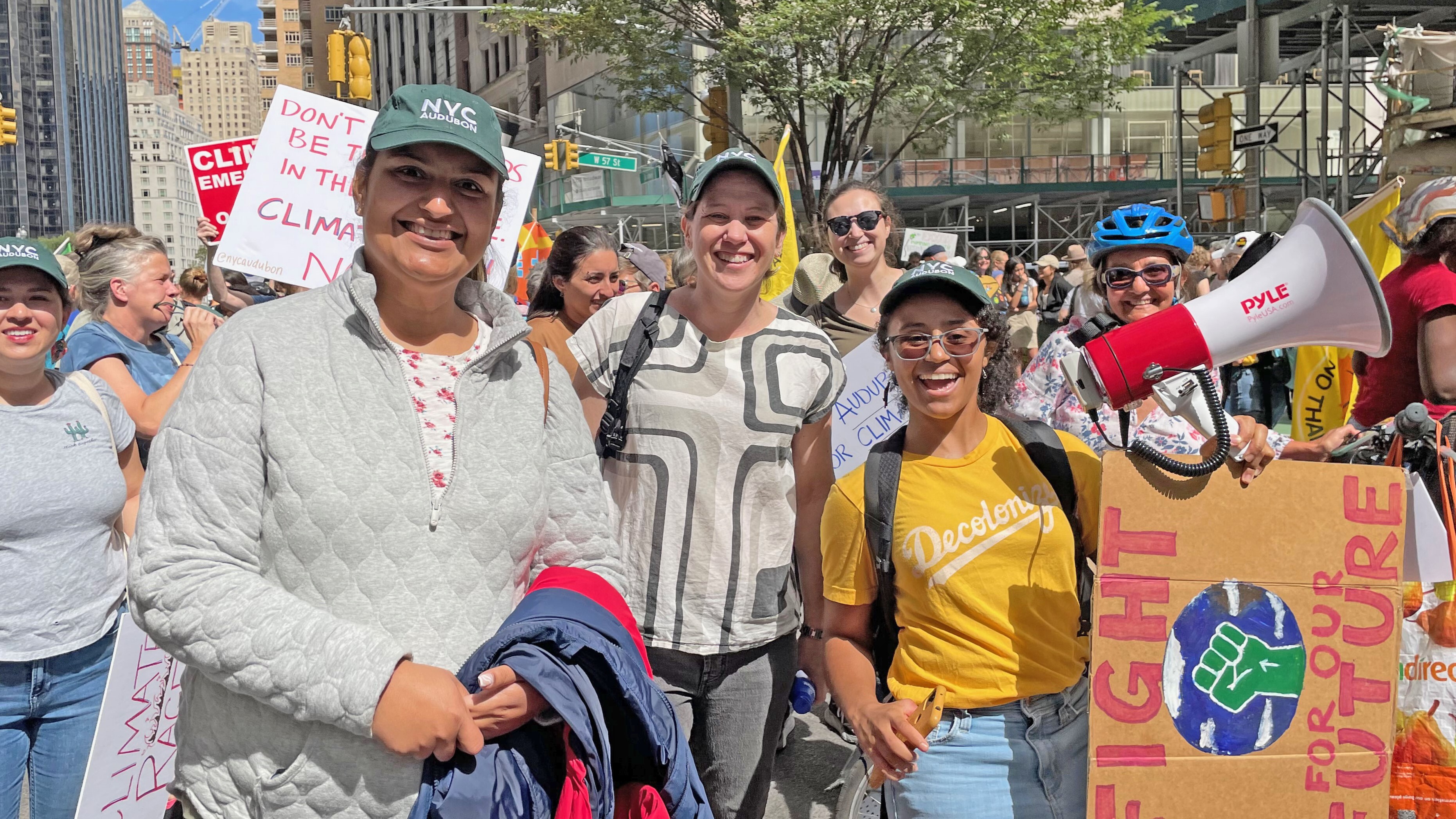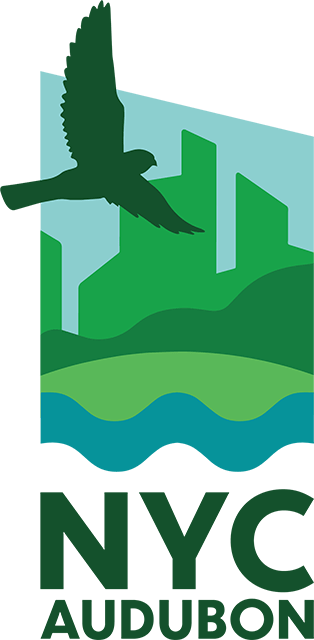Small Wins. Big Impact.
.jpg)
NYC Audubon's Director of Advocacy and Engagement Saman Mahmood (left) with NYC Council Member Shahana Hanif (right) at the 2023 Fall Roost. Photo Credit: Cyrus Gonzeles
By Olivia Liang
Saman Mahmood joined the NYC Audubon team in August 2023 in the new role of Director of Advocacy and Engagement. Saman’s extensive expertise bridging government relations and grassroots campaigns—as she did when working with the Richmond County District Attorney’s Community Partnership Unit and serving as Deputy District Director in the US House of Representatives—will bolster NYC Audubon’s efforts to protect urban biodiversity and make the City more sustainable for birds and people.
By Olivia Liang
Saman Mahmood joined the NYC Audubon team in August 2023 in the new role of Director of Advocacy and Engagement. Saman’s extensive expertise bridging government relations and grassroots campaigns—as she did when working with the Richmond County District Attorney’s Community Partnership Unit and serving as Deputy District Director in the US House of Representatives—will bolster NYC Audubon’s efforts to protect urban biodiversity and make the City more sustainable for birds and people.
This interview has been shortened for length and clarity.
What brought you to NYC Audubon?
I came from a law enforcement agency working for the District Attorney of Richmond County Michael McMahon in his Community Partnership unit. I’ve been in government and politics for almost a decade; I’ve done a lot of campaign work, I’ve worked in Congress, I’ve worked for some City agencies, and I really wanted to find a city or statewide platform. That’s what brought me to Audubon—the platform itself.
Climate change and conservation work needs to be more accelerated now than ever. We’re seeing that in all the different extreme weathers that are in New York City. We’re getting used to every September there being floods in Brooklyn and Queens, but this is not normal. This is not okay. Our resiliency as a City is really crumbling, and our infrastructure can’t handle it.
We need to get more invested in our environment, so that was a big part of the reason why I wanted to come and focus on one area and build an impact from there.
How will your experience working in government tie in with NYC Audubon’s mission and vision?
I’ve done work with FEMA and with infrastructure, I’ve done work with building the sea wall in Staten Island. I’ve worked with City agencies doing a lot of work with the sewage system, helping people get more infrastructure for their areas that get overflowed. What we often see is that there’s a lot of disconnect between development and infrastructure. A local block was supposed to have five houses on it. It now has 10 smaller houses on it, and that infrastructure isn’t made to handle that much sewage, so it overflows quickly and backs up. It’s affecting someone’s home, it’s affecting somebody who may have a disability and may need a ramp to get out of their house. Seeing things like that and fighting for constituents to get them help to deal with these kinds of problems that aren’t very simple is really what brought me into this.
Overall, we as a City need to pay attention to infrastructure. And I feel like it’s at the level that it’s a national security concern. Look at the impact on birds in New York City: glass and artificial light impact birds all throughout the eastern coast, all throughout migration season, no matter where they’re going. We’re a hotspot in-between and we see that what we do here matters.
What are some of your long-term goals as Director of Advocacy & Engagement?
Putting diversity, equity, and inclusion at the center of our work. That starts off by engaging different communities but being more understanding and mindful of our impact. We don’t want to go into different communities and just run programs for the hell of running them. We want to go and put in the groundwork to understand where we’re going to be impactful and build that out through partnerships. Let’s partner with organizations and agencies that are already in these areas, that are already doing the work that we can get feedback from.
I talk to people about the work at Javits and Brookfield, all these huge real estate owners in New York City, and people are so surprised. We’re having conversations about: what’s your organizational impact? What are you building upon? Do you understand how your organization affects the ecology of where you are? We understand that the New York we’re in today is not the New York we all grew up in. What is our responsibility and our community service to New York?
We totally understand when it comes to collision work and retrofitting glass how expensive and costly and hard it can be for the industry. Getting Lights Out legislation is a process but long-term investments start out with conversations. I like to take small wins as the key. Building impact is really through small wins. Building out the space to really focus on New York and invest in New York is really one of our key understandings and what I want to build out.
As a native Staten Islander, how does it feel doing New York-centric work?
I am a die-hard New Yorker. I don’t want to live anywhere else, I don’t want to be anywhere else. I’m very invested here, and it’s very central to who I am. It’s my passion work, I’m passionate about making a positive impact on my community through government and building partnerships that bring long-term effects and long-term resilience. This is my way of doing that.
What challenges do you expect Advocacy & Engagement will have to tackle?
One of our biggest challenges in New York City, something we’re looking out for, is only being associated as a birders club. So we’re really building out the understanding of all the other work that we’re doing, in addition to building an appreciation of birds. What I’m excited about is getting everyone involved, getting our Board involved, people who come to our outings, people we’re meeting at festivals. Whether that’s them reading The Urban Audubon newsletter or the eGret, or following us on social media, that’s building upon our presence.
But I am excited to bring this as a recreational activity to communities that have not done this before, helping people connect with their environment and where they live. We all learned in COVID that we need to be outside. Being in nature makes you happy. Many organizations are pushing birding because they understand that it’s great for your mental health.
Are you concerned that the Audubon name change might pose some challenges?
No. I’m really excited about it actually. The Audubon name means something to many people, but there’s only a small sector of people that associate Audubon with birds. I actually didn’t know what Audubon meant until I did research for this position, but the elected official I was working for, said: “Yeah, James John Audubon. It’s a household name.”
It wasn’t a household name in my house. I had no idea. I’m the daughter of immigrants. We don’t even speak English at home.
This name change is very different. But it’s exciting. The organization is in a really transformational phase, and we’re looking forward to growing our impact around our name, making it more inclusive. I’m excited about the work that we’re doing and to have a name that reflects it.



